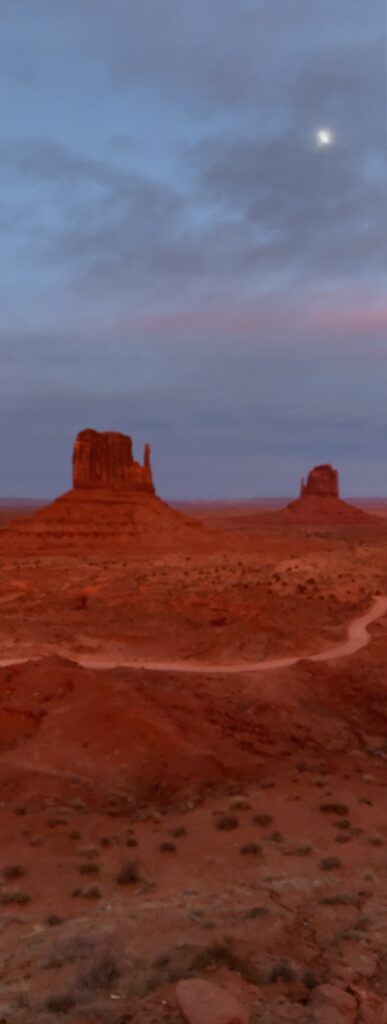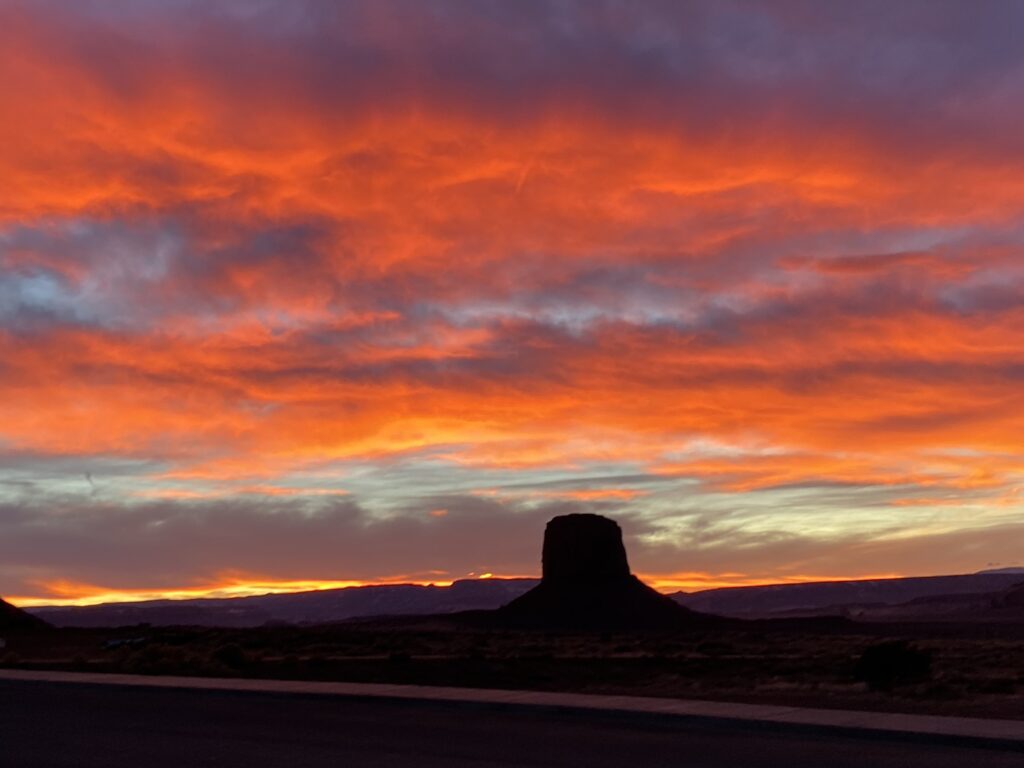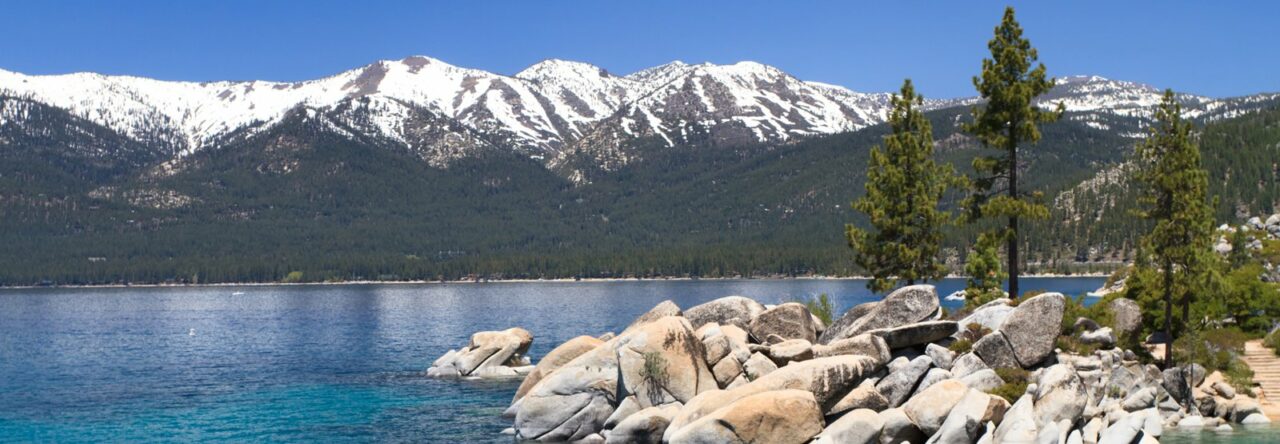
The Navajo people call this place Tseyi – place between the rocks. Navajo people refer to themselves as Diné. There are 3 canyons here, Canyon de Chelly (pronounced shay), Canyon del Muerto, and Monument canyon.

The canyon lies within the Navajo nation and is solely owned by the Navajo Tribal Trust. It also protects and preserves ruins from the ancestral puebloans, the Anastazi people who lived here from Round 700-1300AD and the Hopi who used the canyon before the Navajo.
The crankiness of yesterday was still lingering this morning and nobody wanted to move. Thankfully Edwin motivated and found us this.

You are not allowed in the canyon without the company of a Navajo member. So there are Jeep tours, horseback riding tours and the Pinzgaur tours, an Austrian troop carrier. Edwin has long wanted to ride in one of these so it was done and he was happier than a kid in a candy shop. He got us motivated but also cautioned “dress warm” as it was still pretty cold and we’d be in an open air vehicle.

The Navajo still use and live in the canyon to this day. The Navajo used to live in the canyon for about 8 months a year. They leave the canyon in the wintertime where it is not as cold. According to “info/sources” about 50 families still live and use the canyon, but our tour guide David, who grew up inside the canyon, says it’s only about 10-15 families and generally only the elderly. They will come down around March until November. Families with children will only return in May after school is over, but generally do not stay in the canyon, rather bring supplies to the grandparents, visit, but then exit the canyon at the end of the day. There is no water in the canyon so water is brought down in barrels for cooking and drinking. Often, David says, you will find grandparents with young 3-11 year old children living in the canyon through the summertime. “The Navajo come down for ceremonies and for the day but not many live in the canyon. There is no running water, no electricity, no TV etc…” David is a Navajo tour guide, grew up raising sheep in the canyon, but does not live in the canyon anymore. There are still cows and horses in the canyon. And the elderly still plant crops such as corn, alfalfa, squash and have orchards of fruit trees.







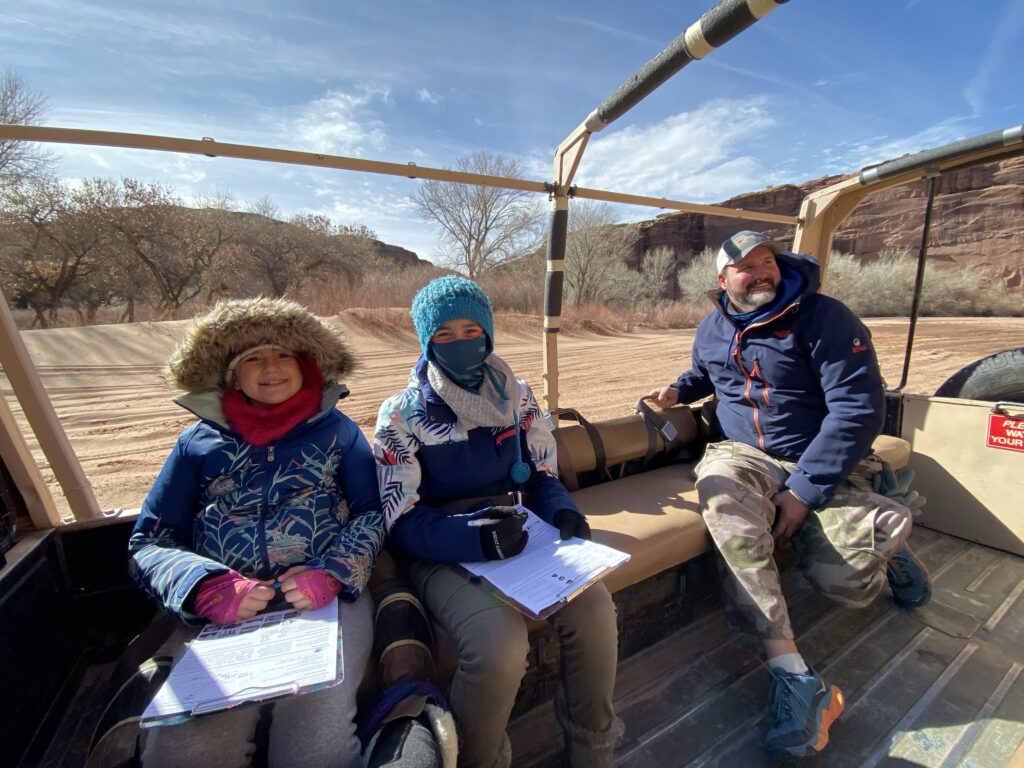

There are both pictographs and petroglyphs from the Anastazi, Hopi, and the Navajo people. The one below shows Navajo hunting deer on horseback. They would follow the deer until it got tired and lay down. Then they would put blessed corn 🌽 pollen in the nostril or the mouth of the deer to suffocate the animal. This would ensure a full buckskin minus any holes.

The Anastazi pictographs and petroglyphs are about 15’ higher on the canyon wall. This is because the canyon floor also used to be about that much higher.

The Anastazi people made these pictographs. Below you can see hand prints, showing life. The negative hand print below and to the left shows a death and that someone was buried here. The Anastazi lived in the canyon year round. The Navajo do not and have their burial grounds above the canyon.

The Navajo lived in summer homes called Hogans. A hogan is made out of timber packed with mud often multi sided like a hexagon. The Anastazi lived in the canyon year round and were cliff dwellers.






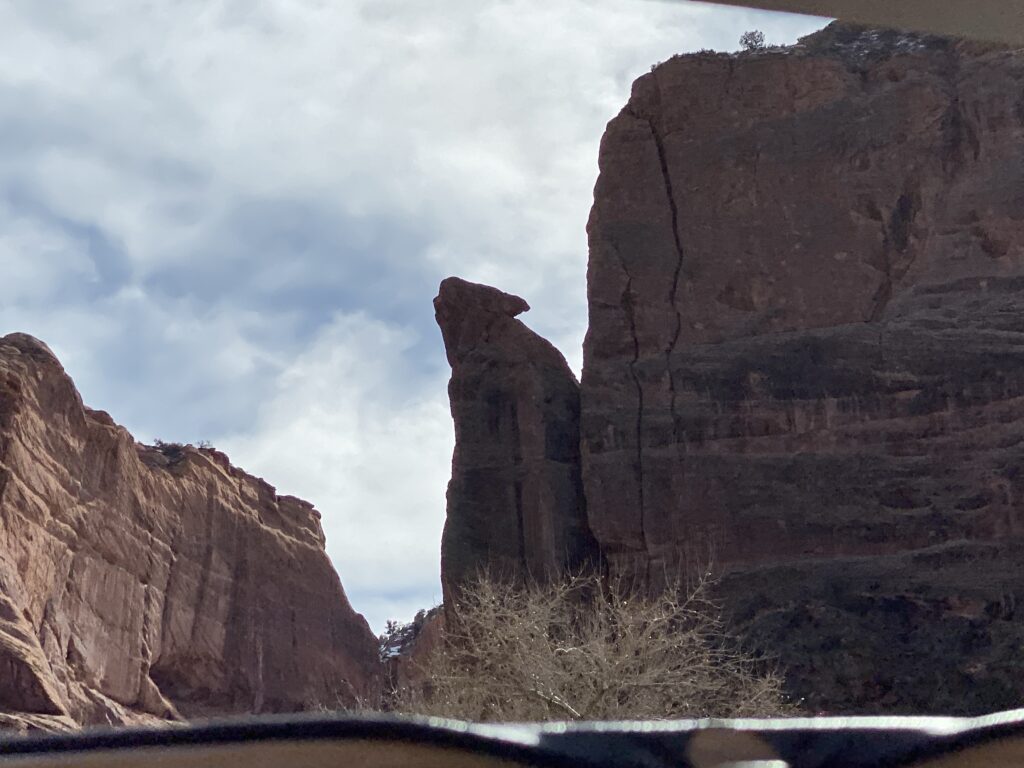
The reason this side of the canyon is called Canyon del Muerto because of a massacre that ran for 2 days when the Spanish shot into a cave and killed 115 women and children in a cave. The 2 circles are to show the 2 days of killing.

Of course we can’t hear Native American stories without it ending in tragedy, Below is Fortress Rock. In 1863 Kit Carson went to the canyon to drive the Navajo out. A number (unknown) went to top of Fortress Rock and stayed up there 3 months during the winter. Eventually the Hogan’s were burned as well as the trees, crops, and orchards and the remaining Navajo were driven out of the canyon.
1864 marked the “long walk” where 8,000-9,000 Navajo men, women, and children walked to Fort Sumner, in New Mexico. The government was trying to put them into reservations in Kansas, but they wanted to return to their land. In 1868 only 2,000-3,000 Navajo returned to this land and began using the canyon in the way they do today.







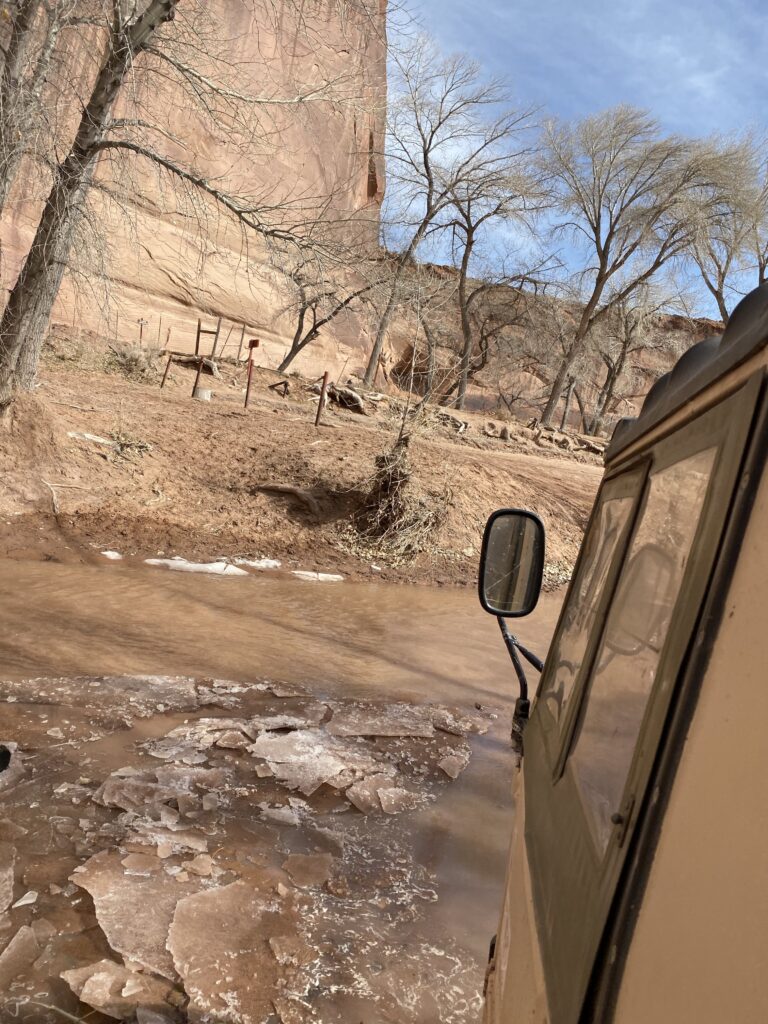
Enjoying the last bit


Everyone was happy to be out of the RV even if it still meant bouncing and around a truck. It was quite fun driving in the deep sand and drive through the winter stream run offs. In the end we had quite a good day. And because we dressed in about 18 layers and brought blankets we were quite cozy.
We didn’t make it to Spider Rock, one of the geological rock formations Canyon de Chelly is known for because we opted for the canyon floor tour. We were tired and weren’t up for driving them rim and we were trying to make monument valley for sunset. Good thinking…because…






